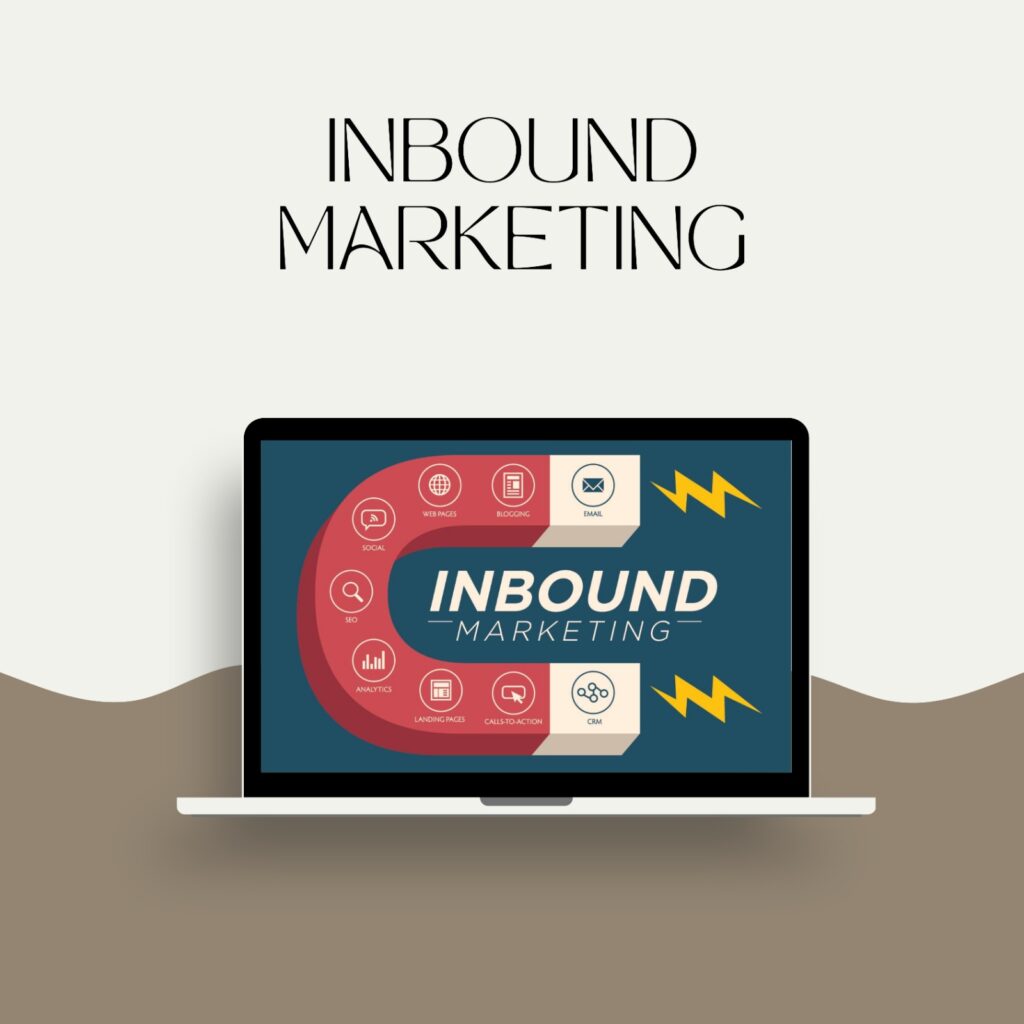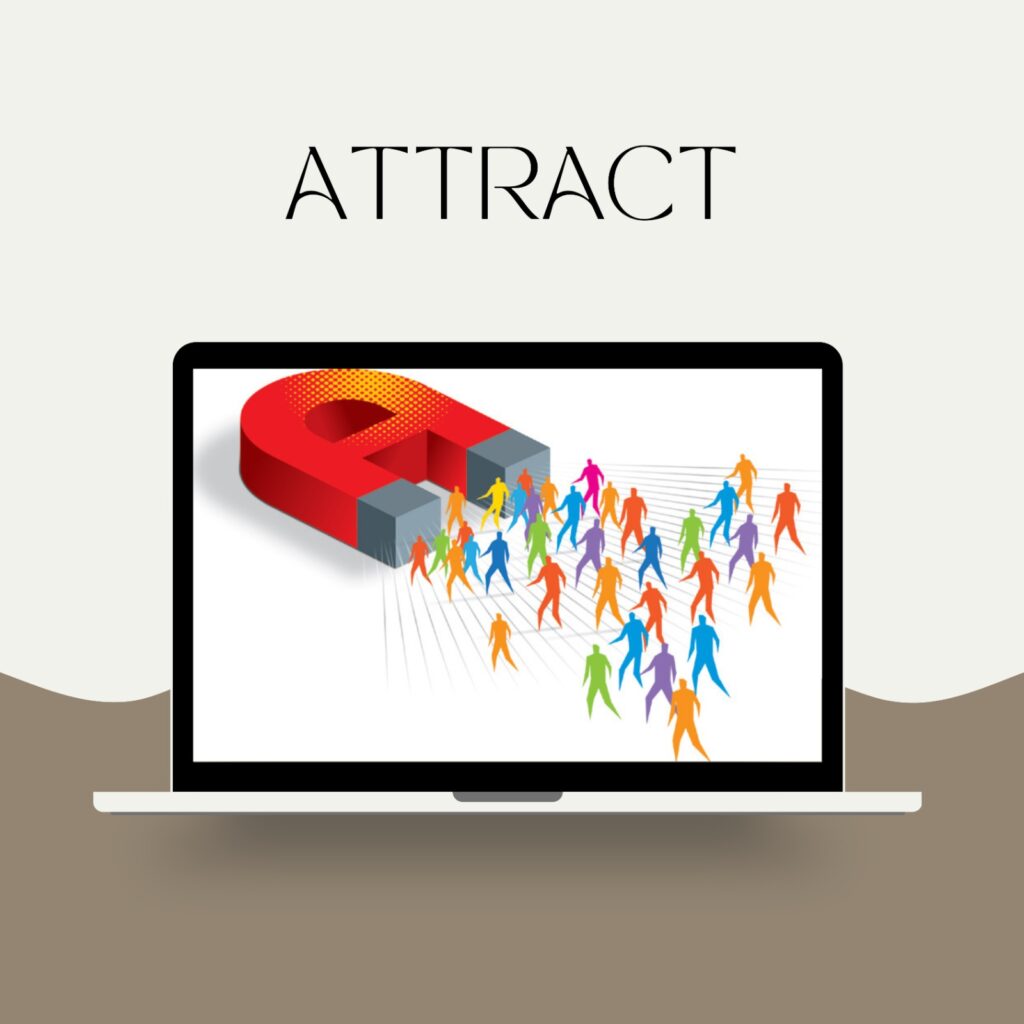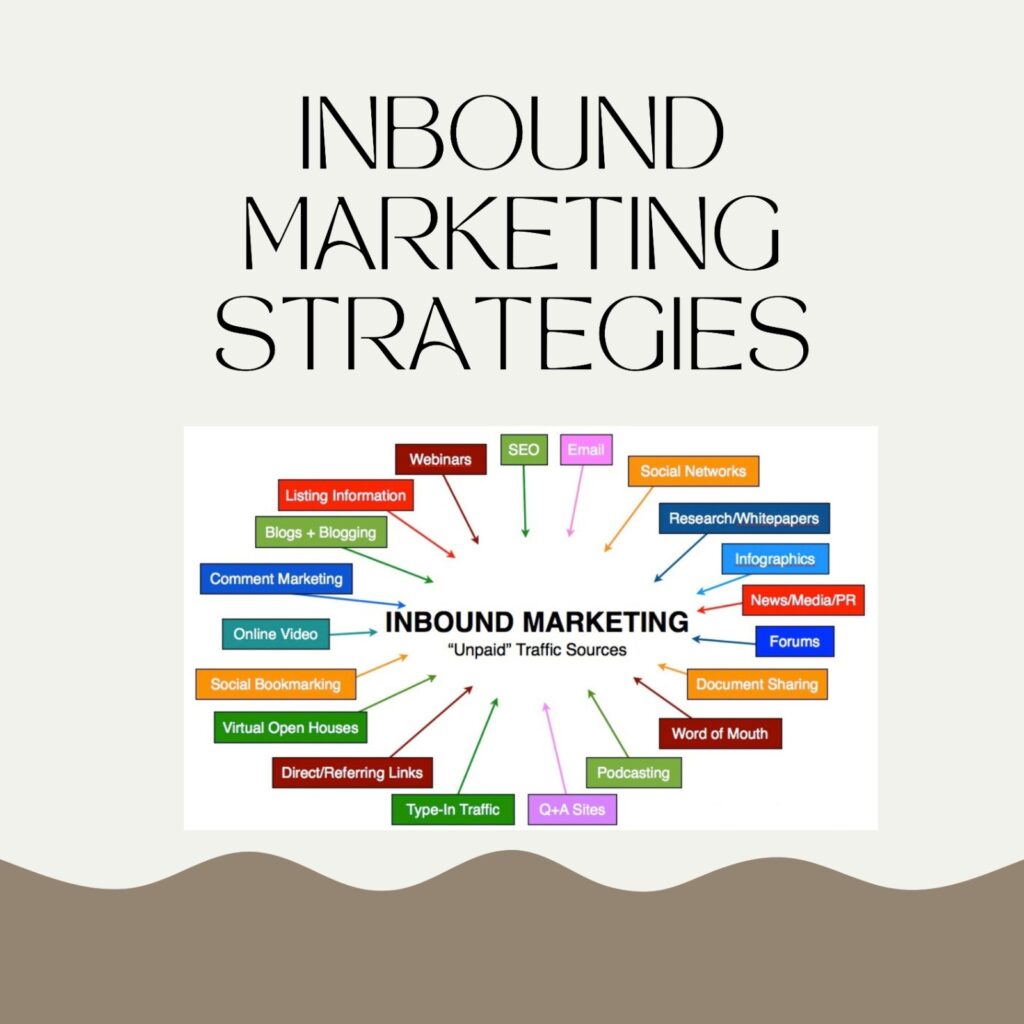Inbound marketing is a methodology that focuses on attracting, engaging, and delighting customers through relevant and valuable content and interactions.
It’s a strategy that aims to earn the attention of potential customers rather than buying it through traditional outbound marketing methods such as advertising, cold calling, and direct mail.

Inbound marketing techniques include search engine optimization (SEO), content marketing, social media marketing, and email marketing.
What Is the Inbound Methodology?
The Inbound Methodology is a process that helps businesses attract, engage, and delight customers using inbound marketing techniques.

It is based on four stages: Attract, Convert, Close, and Delight.
Attract:
In this stage, the focus is on attracting visitors to the website through search engine optimization (SEO), content marketing, and social media marketing.
Convert:
Once visitors are on the website, the goal is to convert them into leads through landing pages, calls-to-action (CTAs), and forms.
Close:
In this stage, the focus is on turning leads into customers through lead nurturing, sales, and account management.
Delight:
The final stage is to delight customers by providing exceptional customer service and creating a positive brand experience. This helps increase customer loyalty and advocacy, leading to repeat business and word-of-mouth marketing.
It helps companies align their marketing and sales efforts to attract, engage, and delight customers in a way tailored to their needs and preferences.
Attract Inbound Methodology
The Attract stage of the Inbound Methodology is the first step in the process of attracting, engaging, and delighting customers.

This stage aims to bring potential customers to your website through various inbound marketing techniques. The strategies used in this stage include:
Content Marketing:
Creating and publishing valuable and relevant content that attracts visitors to your website and answers their questions.
Social Media Marketing: Using social media platforms to promote your business and drive traffic to your website.
Paid Advertising:
Using paid advertising methods such as Google Ads or social media ads to reach a larger audience and drive traffic to your website.
Influencer Marketing:
Partner with industry influencers to promote your products or services.
Once visitors are on the website, they focus on converting them into leads through landing pages, calls-to-action, and forms.
Engage Inbound Methodology?
The Engage stage of the Inbound Methodology is the second step in attracting, engaging, and delighting customers. This stage aims to convert website visitors into leads by capturing their contact information
Lead magnets:
Offering something of value, such as an e-book, webinar, or a free trial, in exchange for contact information.
Landing pages:
Creating dedicated web pages with a specific goal, such as capturing leads, that are optimized for conversions.
Calls-to-action (CTAs):
Placing strategically placed buttons or links on your website that encourage visitors to take a specific action, such as filling out a form or scheduling a demo.
Lead Nurturing:
Sending targeted and personalized content and communications to leads to educate and engage them in a meaningful way.
Lead Scoring:
Assigning a score to leads based on their behavior and engagement and prioritizing follow-up with the most engaged and qualified leads.
Delight Inbound Methodology?
The Delight stage of the Inbound Methodology is the final step in attracting, engaging, and delighting customers.

This stage aims to create a positive brand experience and increase customer loyalty and advocacy. The strategies used in this stage include:
Exceptional customer service:
Providing a high level of support and assistance to customers to address any issues or concerns.
Personalization:
Tailoring the customer experience to the individual through the use of customer data, personalization software, and techniques, such as dynamic content, to create more engaging and relevant interactions
Community building:
Creating a sense of community and connection among customers through social media, customer groups, and events.
Upselling and cross-selling:
Offering complementary products or services to existing customers to increase revenue and customer satisfaction.
Gathering customer feedback:
Regularly gathering feedback from customers to understand their needs and preferences and using that information to improve the customer experience.
What Is the Flywheel?
The Flywheel is a customer acquisition and retention model developed by HubSpot, a leading inbound marketing and sales software company.
The Flywheel model has three stages: Attract, Engage, and Delight.
- Attract: This stage focuses on bringing in new customers through inbound marketing strategies such as search engine optimization (SEO), content marketing, and social media marketing.
- Engage: This stage focuses on converting visitors into leads and customers through lead magnets, nurturing, and personalized interactions.
- Delight: This stage focuses on creating a positive brand experience and increasing customer loyalty and advocacy through exceptional customer service, community building, and regular feedback.
Inbound Marketing Strategies
Inbound marketing is a strategic approach to attracting, engaging, and delighting customers by creating and distributing valuable and relevant content.

Some common inbound marketing strategies include:
Search Engine Optimization (SEO):
Optimizing your website and its content to rank higher in search engine results pages (SERPs) for relevant keywords.
Content Marketing:
Creating and publishing valuable and relevant content that attracts visitors to your website and answers their questions. This could include blog posts, e-books, whitepapers, infographics, and more.
Social Media Marketing:
Using social media platforms to promote your business and drive traffic to your website. This could include creating and sharing content, running social media ads, and engaging with your audience.
Email Marketing:
Sending targeted and personalized emails to leads and customers to nurture relationships and drive conversions.
Influencer Marketing:
Partner with industry influencers to promote your products or services.
Video Marketing:
Creating and sharing video content on platforms like YouTube, Vimeo, and TikTok to reach a wider audience and increase engagement.
Paid Advertising:
Using paid advertising methods such as Google Ads or social media ads to reach a larger audience and drive traffic to your website.
Marketing Automation:
Using software tools to automate repetitive tasks, such as email campaigns, lead scoring, and lead nurturing.
Attracting Strategies
Attracting strategies are tactics used to bring new potential customers to a business. Some common inbound marketing strategies for attracting new customers include:
- Search Engine Optimization (SEO)
- Content Marketing
- Social Media Marketing:
- Influencer Marketing:
- Video Marketing:
- Paid Advertising:
- Guest Blogging:
Engaging Strategies
Engaging strategies are tactics used to convert potential customers into leads and customers. Some common inbound marketing strategies for engaging customers include:
- Lead Magnets:
- Lead Nurturing:
- Personalized Interactions:
- Landing Pages:
- Forms:
- Live Webinars:
- Chatbot:
Using the Inbound Methodology in Marketing
The Inbound Methodology is a customer-centric approach to marketing that focuses on attracting, engaging, and delighting customers.
It involves creating valuable and relevant content that answers customer questions, building relationships with potential customers, and providing a positive customer experience.
- Engage
- Delight
- Continuously Optimize
Use Inbound Marketing to Grow Better
Inbound marketing is an effective strategy for growing a business as it helps to attract and retain customers by providing value and building relationships.
Here are some ways businesses can use inbound marketing to grow better:
- Create valuable content:
- Optimize for SEO:
- Utilize Social Media:
- Build landing pages:
- Nurture leads:
- Measure and Optimize:
why is social media an essential part of inbound marketing?
Social media is integral to inbound marketing because it allows businesses to reach and engage with a large audience in a cost-effective and targeted way.
Here are a few reasons why social media is essential in inbound marketing:
- Audience Reach:
- Targeting:
- Cost-effective:
- Building Relationships:
- Measurable:
- Personalization:
- Amplifying reach:
How can audience segmentation enhance your inbound marketing efforts?
Audience segmentation divides your target audience into smaller groups based on specific characteristics or behaviors. This can enhance your inbound marketing efforts in several ways:
- Personalized content:
- Targeted campaigns:
- A better understanding of your audience:
- Identify new opportunities:
- Improved customer service:
- Increased ROI:
- Identifying influencers:
how can email marketing fuel your overall inbound strategy?
Email marketing is a valuable tool that can fuel your overall inbound marketing strategy in several ways:
- Lead Nurturing:
- Lead Retargeting:
- Segmentation:
- Cost-effective:
- Re-engaging customers:
why is goal setting necessary to inbound marketing?
Goal setting is an essential aspect of inbound marketing because it helps businesses to:
- Define success:
- Measure progress:
- Align teams:
- Optimize campaigns:
how to attract customers with inbound marketing?
Attracting customers with inbound marketing involves creating valuable and relevant content that draws people to your business. Here are some strategies you can use to attract customers with inbound marketing:
- Blogging:
- Social Media:
- Content Marketing
- Influencer Marketing:
- Referral Marketing
- Landing pages:
- Lead magnets
how much does inbound marketing cost?
The cost can vary depending on several factors, including the size of your business, the scope of your inbound marketing efforts, and the tools and resources you use.
Inbound marketing can be more cost-effective than traditional outbound marketing methods such as television or print advertising.
Creating and publishing content on your website, blog, and social media channels is inexpensive. Many Top rated companies do inbound marketing in-house, with some tools such as HubSpot, Mailchimp, or Hootsuite, which have free and paid plans.
Costs can vary widely if you hire an inbound marketing agency or consultant. According to recent studies, the average cost of inbound marketing can range from $2,500 to $25,000 per month, depending on the project’s scope and the expertise required.
is inbound marketing the same as digital marketing?
Marketing is a specific marketing strategy that focuses on attracting customers to your business through content marketing, social media marketing, search engine optimization, and other tactics that appeal to consumers and bring them to your website.
This aims to create a positive experience for potential customers and establish a relationship with them so they will want to do business with you.
Digital marketing, on the other hand, is a broader term that encompasses all types of marketing that use digital channels, such as the internet, mobile devices, and social media, to promote products or services.
Is social media inbound or outbound marketing?
It is a strategy where a company creates valuable content that attracts potential customers to the company’s website.
Social media can be used by creating and sharing relevant, valuable, and exciting content with a specific target audience.
Outbound marketing is a traditional strategy that uses interruptive tactics to reach customers, such as cold calling, direct mail, and advertising.
Social media can be used for outbound marketing by running paid ads on platforms like Facebook, Instagram, and Twitter.



Add a Comment